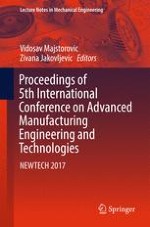2017 | OriginalPaper | Chapter
Intelligent Wear Identification Based on Sensory Inline Information for a Stamping Process
Authors : Johannes Hohmann, Tillmann Schatz, Peter Groche
Published in: Proceedings of 5th International Conference on Advanced Manufacturing Engineering and Technologies
Publisher: Springer International Publishing
Activate our intelligent search to find suitable subject content or patents.
Select sections of text to find matching patents with Artificial Intelligence. powered by
Select sections of text to find additional relevant content using AI-assisted search. powered by
